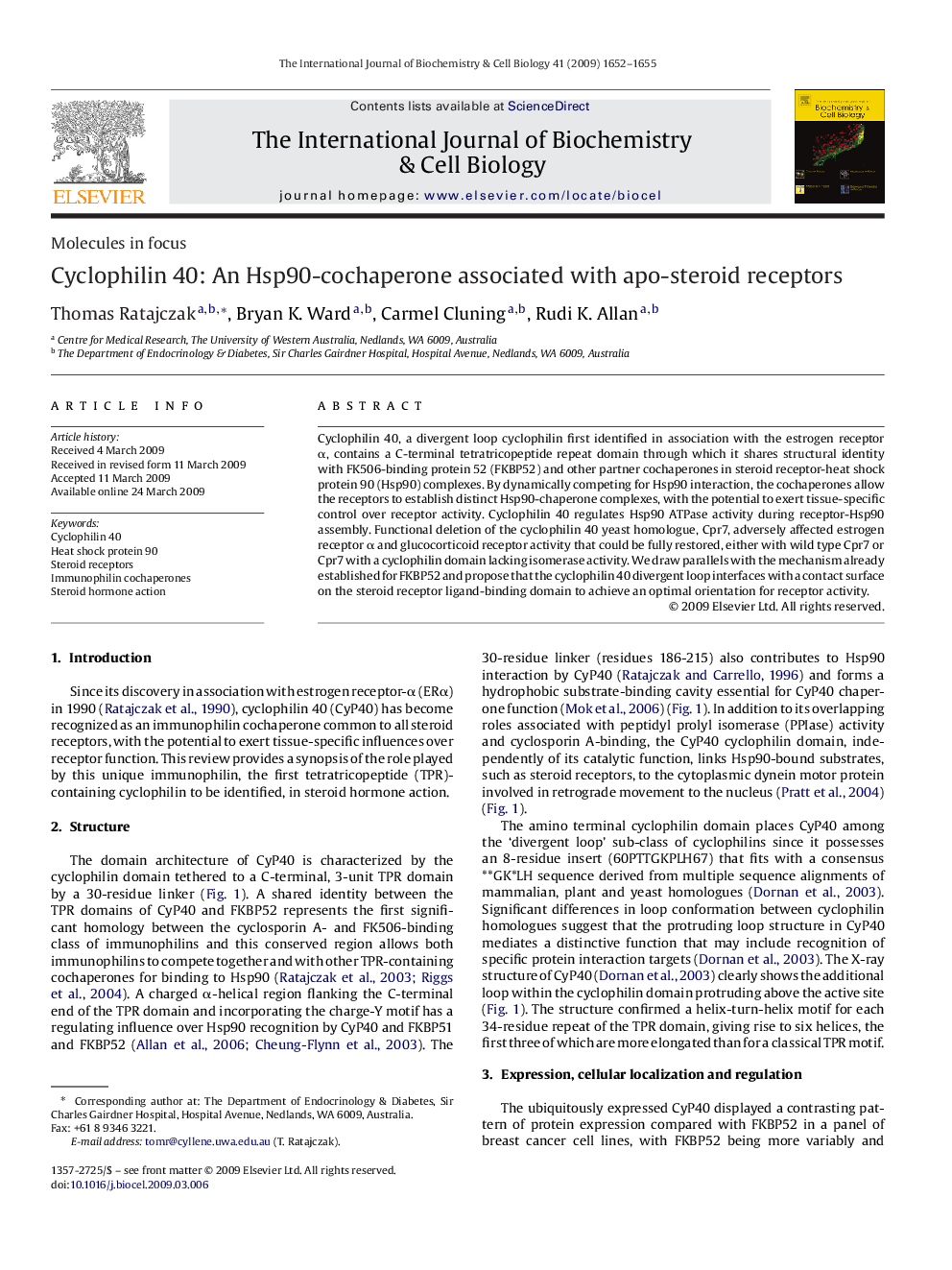| Article ID | Journal | Published Year | Pages | File Type |
|---|---|---|---|---|
| 1984173 | The International Journal of Biochemistry & Cell Biology | 2009 | 4 Pages |
Cyclophilin 40, a divergent loop cyclophilin first identified in association with the estrogen receptor α, contains a C-terminal tetratricopeptide repeat domain through which it shares structural identity with FK506-binding protein 52 (FKBP52) and other partner cochaperones in steroid receptor-heat shock protein 90 (Hsp90) complexes. By dynamically competing for Hsp90 interaction, the cochaperones allow the receptors to establish distinct Hsp90-chaperone complexes, with the potential to exert tissue-specific control over receptor activity. Cyclophilin 40 regulates Hsp90 ATPase activity during receptor-Hsp90 assembly. Functional deletion of the cyclophilin 40 yeast homologue, Cpr7, adversely affected estrogen receptor α and glucocorticoid receptor activity that could be fully restored, either with wild type Cpr7 or Cpr7 with a cyclophilin domain lacking isomerase activity. We draw parallels with the mechanism already established for FKBP52 and propose that the cyclophilin 40 divergent loop interfaces with a contact surface on the steroid receptor ligand-binding domain to achieve an optimal orientation for receptor activity.
